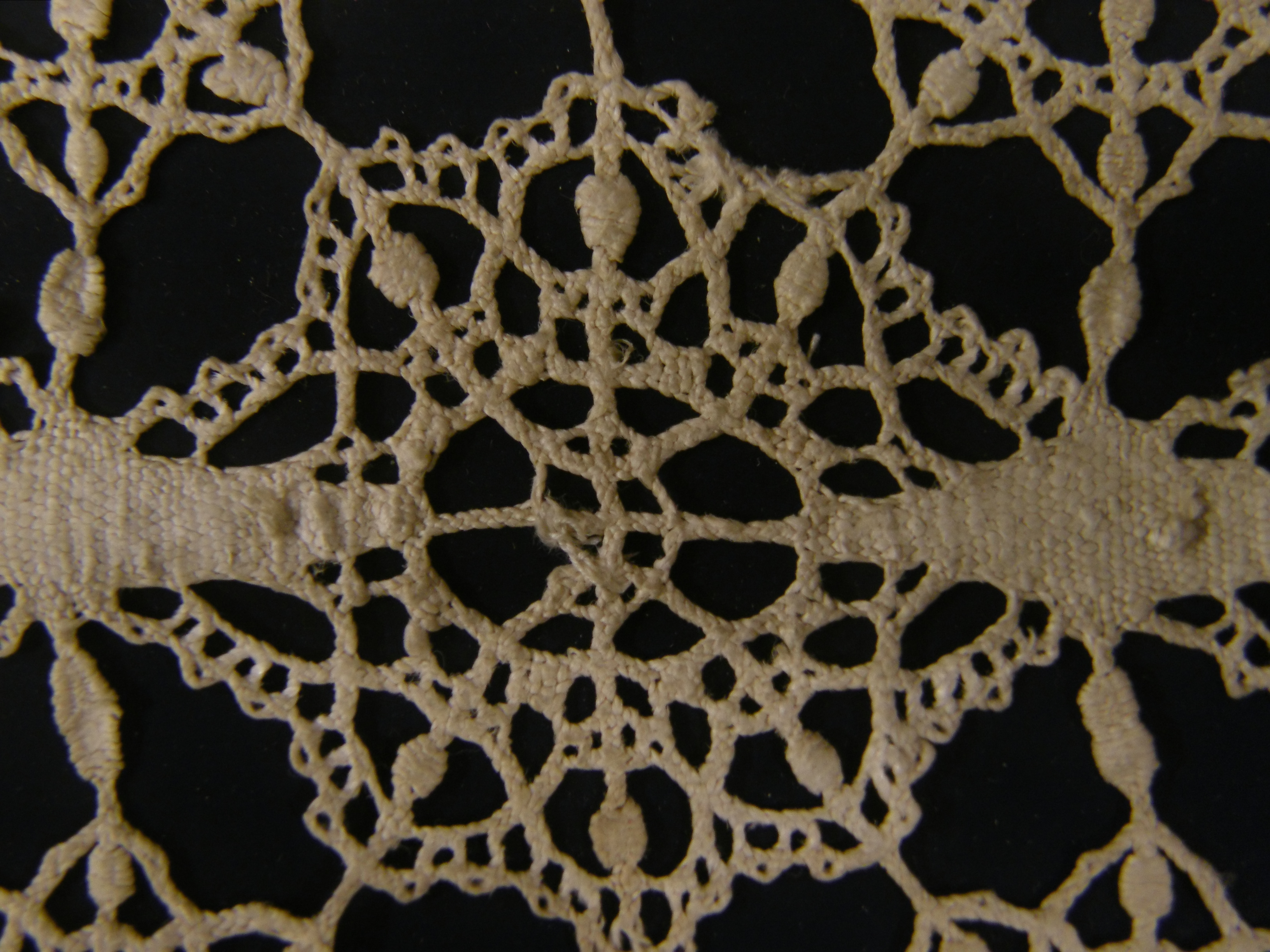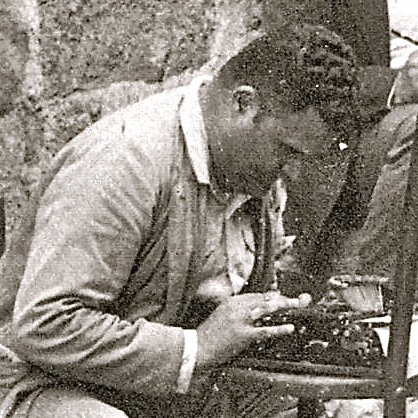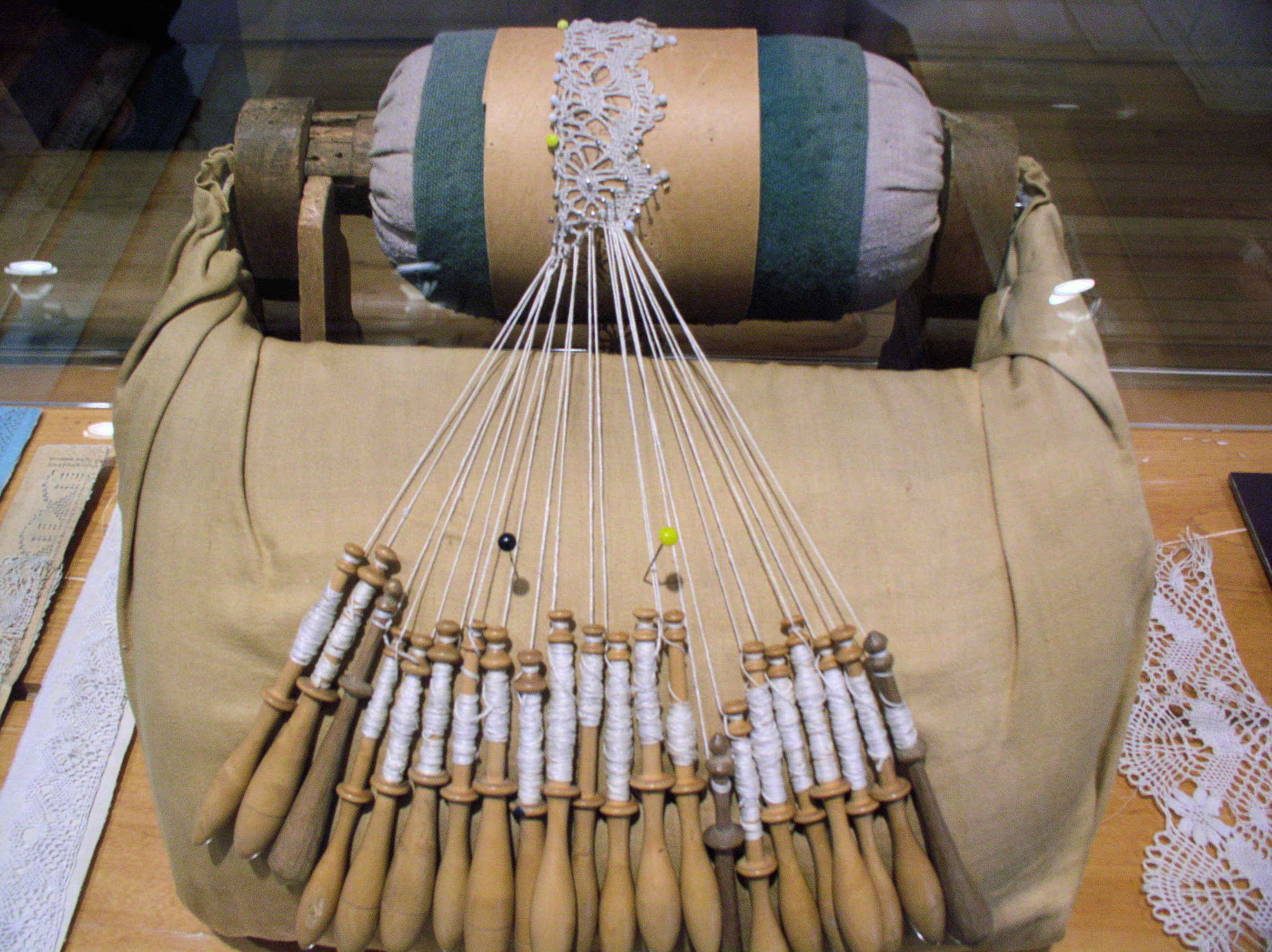|
Adelaida Ferré Gomis
Adelaida Ferré i Gomis de Ruíz de Narváez (Barcelona, 24 February 1881 - Barcelona, 9 March 1955) was a Spanish historian, teacher, and folklorist associated with lace-making in Catalonia. Early life and education Adelaida Ferré Gomis was the daughter of the painter and decorator Pere Ferré. Her education began at the Escola Normal Superior de Mestres before attending the Municipal Conservatory of Barcelona and the Escola d'Institutrius. There, she had as a teacher the folklorist :es:Rossend Serra i Pagès. Between the years 1902 and 1915, she received artistic training at the Escola de la Llotja. She combined her artistic studies with those at the :ca:Institut Català de les Arts del Llibre and the :es:Centro de Cultura de Mujeres Francesca Bonnemaison, where she was able to perfect her knowledge of lace-making and other crafts. One of Adelaide's teachers at this institute was :es:José Fiter e Inglés, who awakened Ferré's interest in the history of needle lace. Care ... [...More Info...] [...Related Items...] OR: [Wikipedia] [Google] [Baidu] |
Barcelona
Barcelona ( ; ; ) is a city on the northeastern coast of Spain. It is the capital and largest city of the autonomous community of Catalonia, as well as the second-most populous municipality of Spain. With a population of 1.6 million within city limits,Barcelona: Población por municipios y sexo – Instituto Nacional de Estadística. (National Statistics Institute) its urban area extends to numerous neighbouring municipalities within the province of Barcelona and is home to around 5.3 million people, making it the fifth most populous ... [...More Info...] [...Related Items...] OR: [Wikipedia] [Google] [Baidu] |
Embroidered Lace
Embroidered lace is embroidered on a base using a needle. The base varies according to the type. Many techniques use a net, either woven or knotted. The net varies: * Woven fabric with threads removed to make a grid (Reticella, Buratto) * Machine made hexagonal net (Limerick, Needlerun net, Tambour) * Knotted square net (either hand-made or machine-made) ( Filet) Sol laces are embroidered in a circular pattern on radiating spokes of threads. These include Tenerife lace and Ñandutí Ñandutí is a traditional Paraguayan lace. The name means "spider web" in Guaraní, the official, indigenous language of Paraguay. The lace is worked on fabric which is stretched tightly in a frame. The pattern is drawn on the fabric and ... lace. Image:Limerick_lace.jpg, 19C Limerick lace wedding veil Image:Lace-filet-hrynkiw.jpg, Filet lace being worked. Image:Carolus_-Private_Collection_-_tule.jpg, Tambour lace from Lier Image:Nanduti_lace.jpg, Ñandutí lace from Asunción Par ... [...More Info...] [...Related Items...] OR: [Wikipedia] [Google] [Baidu] |
Library Of Catalonia
The Library of Catalonia (, ) is the Catalan national library, located in Barcelona, Catalonia, Spain. The primary mission of the Library of Catalonia is to collect, preserve, and spread Catalan bibliographic production and that related to the Catalan linguistic area, to look after its conservation, and to spread its bibliographic heritage while maintaining the status of a center for research and consultation. The Library occupies 8,820 m2 and has nearly about four million items. It is a special member of the Consortium of European Research Libraries (CERL). History The library was founded in 1907, as the library of the Institute for Catalan Studies (''Institut d'Estudis Catalans'', IEC). It was opened to the public on 28 May 1914, in the time of the recently founded Commonwealth of Catalonia, and was housed in the Palau de la Generalitat de Catalunya. [...More Info...] [...Related Items...] OR: [Wikipedia] [Google] [Baidu] |
Fishing Museum, Palamós
Opened in 2002, the Fishing Museum is dedicated to fishing knowledge and dissemination, and Costa Brava's maritime heritage. Located in the Palamós fishing port in an old warehouse called "Tinglado", the permanent exhibition explains the history, current affairs and sustainable fishing in Costa Brava's future. ThFundació Promediterràniamanages the Fishing Museum, a municipal facility. Origin The Fishing Museum began in 1920 with founding the Cau de la Costa Brava in order to set up a new museum. In 1994, the Palamós City Council signed an agreement with the University of Girona to create a field of study and investigation to create the museum project. This collaboration redefined the project to turn it into a thematic museum dedicated to fishing in the Costa Brava. In 1999, the project for the Inventory of Maritime and Fishing Heritage of the Costa Brava began, as part of the Ethnological Heritage Inventory of Catalonia. Another project development aim was to change the head ... [...More Info...] [...Related Items...] OR: [Wikipedia] [Google] [Baidu] |
Hiking Club Of Catalonia
The Hiking Club of Catalonia () is a sporting and cultural organisation founded in 1876 and today offering services that include courses in mountaineering and organised hikes. The club also has a library of maps and photographs. The Club was founded during a period known as, and by people involved in, the Catalan Renaissance, for the purposes of investigating the richness of Catalonia from the perspectives of science, literature and the arts. The Club was instrumental in promoting the Catalan language. In 1906 it organised the First International Congress on the Catalan Language. In 1907 it passed a resolution to create the Institute for Catalan Studies to pursue the study in a more academic way. In order to explore Catalonia's architectural heritage, the architect and politician Lluís Domènech i Montaner visited the Valleys of Boí and Taüll near the border with Aragon in 1904, 1905 and 1906. In September 1907 the Institute for Catalan Studies and the Club organised a now ... [...More Info...] [...Related Items...] OR: [Wikipedia] [Google] [Baidu] |
Francesca Bonnemaison I Farriols
Francesca Bonnemaison i Farriols (12 April 1872 – 1949) was a Spanish Catalan educator and promoter of female education in Catalonia. She established Biblioteca Popular de la Dona (lit. Popular Library of Women), first library exclusively for women in Europe, in Barcelona Barcelona ( ; ; ) is a city on the northeastern coast of Spain. It is the capital and largest city of the autonomous community of Catalonia, as well as the second-most populous municipality of Spain. With a population of 1.6 million within c ... in 1909. Early life Bonnemaison was born on 12 April 1872 in Barcelona to father of French origin and Catalan mother. Her father was an affluent businessman. She was given a strong religious upbringing and learnt different languages, painting and music in her early life. In 1893, at the age of 21, she married Narcís Verdaguer i Callís, a lawyer and politician. She collaborated with him at his law firm. Female education Bonnemaison devised a project, Wom ... [...More Info...] [...Related Items...] OR: [Wikipedia] [Google] [Baidu] |
Esperanto
Esperanto (, ) is the world's most widely spoken Constructed language, constructed international auxiliary language. Created by L. L. Zamenhof in 1887 to be 'the International Language' (), it is intended to be a universal second language for international communication. He described the language in ''Dr. Esperanto's International Language'' (), which he published under the pseudonym . Early adopters of the language liked the name and soon used it to describe his language. The word translates into English as 'one who hopes'. Within the range of constructed languages, Esperanto occupies a middle ground between "naturalistic" (imitating existing natural languages) and ''Constructed language#A priori and a posteriori languages, a priori'' (where features are not based on existing languages). Esperanto's vocabulary, syntax and semantics derive predominantly from languages of the Indo-European languages, Indo-European group. A substantial majority of its vocabulary (approximat ... [...More Info...] [...Related Items...] OR: [Wikipedia] [Google] [Baidu] |
Joan Amades
Joan Amades i Gelats (; Barcelona, 23 July 1890 - 17 January 1959), was a Catalan ethnologist and folklorist. An autodidact, he worked at the historical archive of the city of Barcelona and at the Museum of Industry and Popular Arts of the same city. From 1956 onwards, he collaborated with UNESCO. He was also an important promoter of Esperanto and founded the ''Federació Esperantista Catalana'' (Catalan Esperanto association). Perhaps the most important book in his large bibliography is ''Costumari Català'' (a collection of Catalan customs), the main work for the study of Catalan popular culture Popular culture (also called pop culture or mass culture) is generally recognized by members of a society as a set of cultural practice, practices, beliefs, artistic output (also known as popular art f. pop art F is the sixth letter of the Latin alphabet. F may also refer to: Science and technology Mathematics * F or f, the number 15 (number), 15 in hexadecimal and higher positiona ... [...More Info...] [...Related Items...] OR: [Wikipedia] [Google] [Baidu] |
Lexicon
A lexicon (plural: lexicons, rarely lexica) is the vocabulary of a language or branch of knowledge (such as nautical or medical). In linguistics, a lexicon is a language's inventory of lexemes. The word ''lexicon'' derives from Greek word (), neuter of () meaning 'of or for words'. Linguistic theories generally regard human languages as consisting of two parts: a lexicon, essentially a catalogue of a language's words (its wordstock); and a grammar, a system of rules which allow for the combination of those words into meaningful sentences. The lexicon is also thought to include bound morphemes, which cannot stand alone as words (such as most affixes). In some analyses, compound words and certain classes of idiomatic expressions, collocations and other phrasemes are also considered to be part of the lexicon. Dictionaries are lists of the lexicon, in alphabetical order, of a given language; usually, however, bound morphemes are not included. Size and organization Items ... [...More Info...] [...Related Items...] OR: [Wikipedia] [Google] [Baidu] |
Bobbin Lace
Bobbin lace is a lace textile made by braiding and twisting lengths of yarn, thread, which are wound on #Bobbins, bobbins to manage them. As the work progresses, the weaving is held in place with pins set in a lace pillow, the placement of the pins usually determined by a pattern or pricking pinned on the pillow. Bobbin lace is also known as pillow lace, because it was worked on a pillow, and bone lace, because early bobbins were made of bone or ivory. Bobbin lace is one of the two major categories of handmade laces, the other being needle lace, derived from earlier cutwork and reticella. Origin A will of 1493 by the Milanese House of Sforza, Sforza family mentions lace created with twelve bobbins. There are two books that represent the early known pattern descriptions for bobbin lace, ''Le Pompe'' from Venice and ''Nüw Modelbuch'' from Zürich. Other popular lace pattern books were produced by Isabella Parasole, which included patterns for reticella, needle lace and bobbin ... [...More Info...] [...Related Items...] OR: [Wikipedia] [Google] [Baidu] |






